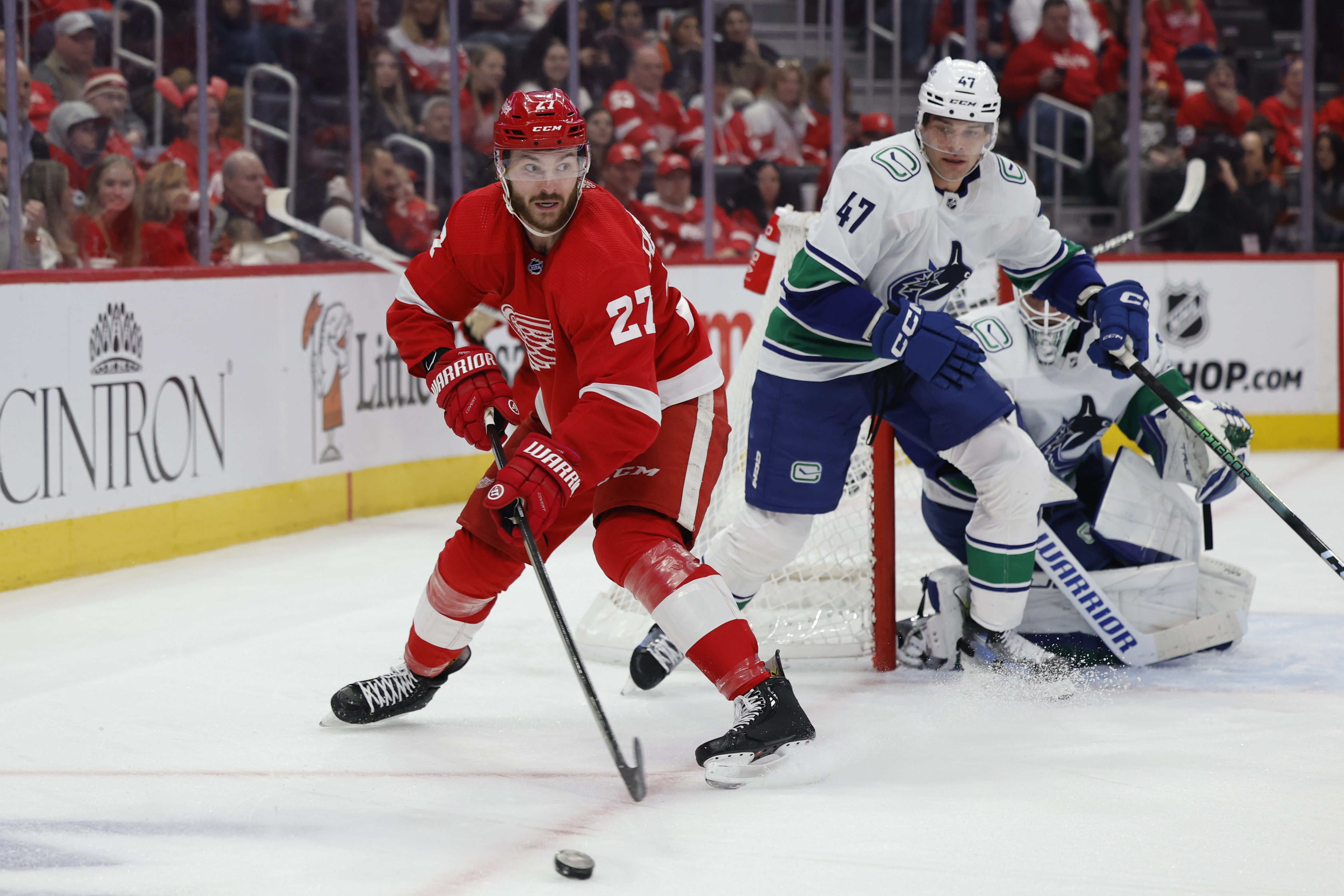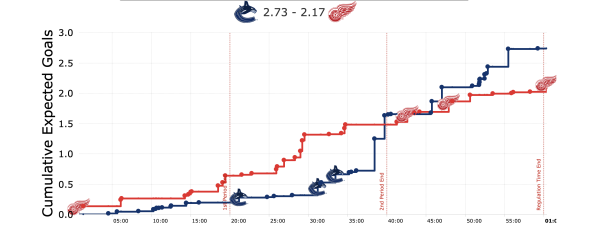
A dive into the underlying numbers from the Red Wings' OT victory over Vancouver Saturday afternoon
A dive into the underlying numbers from the Red Wings' OT victory over Vancouver Saturday afternoon

On Saturday afternoon at Little Caesars Arena, the Detroit Red Wings returned from a 10-day hiatus with a convincing victory—coming from behind to knock off the Pacific Division-leading Vancouver Canucks by a 4-3 final score in overtime. For a clearer sense of how the game was won, let's take a dive into the underlying numbers that defined the game.
The Big Picture
-Per MoneyPuck.com, Vancouver edged the Red Wings in expected goals 2.73-2.17 across all situations. Somewhat curiously, this was a game in which both teams' offense seemed to come against the run of play.

Detroit was sharp (especially defensively) to open the game, despite their long layoff, and earned an 0.642-0.192 edge in xG and a 1-0 lead through the first period. However, over the first 13:27 of the second period, the Canucks scored three times, despite enduring an 0.685-0.469 disadvantage during that run. In the third period, the Red Wings struck twice to tie the game at three, but it was Vancouver who owned a commanding 1.092-0.544 edge in xG for the period. In OT, Jake Walman found the winner with a successful penalty shot.
-By the numbers, Vancouver had the better of five-on-five play over the course of the game. Detroit had just a 45.45% CorsiFor, a 35.48% share of Scoring Chances, a 35.71% share of high-danger chances, and a 37.86% share of xG for the night. Those are hardly favorable numbers, but the Red Wings showed throughout January that they are able to absorb that sort of five-on-five pressure and still come out ahead.
Individual Impacts
-The Canucks' second line of Elias Lindholm, J.T. Miller, and Brock Boeser was its most consistent in driving offense over the course of the game. That unit (working primarily against Jeff Petry and Ben Chiarot) earned an 0.529-0.163 advantage in expected goals; however, they didn't manage to actually score.
Meanwhile, Vancouver's top line of Nils Hoglander, Elias Pettersson, and Pius Suter (working mostly against the Red Wings' top pair of Jake Walman and Moritz Seider) had the opposite experience; they struggled in terms of play driving, but they found plenty of chances. They were out-chanced 0.311-0.341 by xGs but scored twice while conceding twice (though only one of those goals for came against Walman and Seider).
-Though he managed a power play assist for Daniel Sprong, Patrick Kane's return from injury was mostly a quiet one. He played 17:11, and he did lead Detroit in individual xG at 0.311 (which came from just two shots). However, his five-on-five xG share was just 7.6%. To that end, his line with J.T. Compher and David Perron did not have an easy night. In 10:29, they were out-chanced 0.037-0.69 by xG and outscored 1-0.
-On the other hand, the Red Wings' third line of Michael Rasmussen, Andrew Copp, and Christian Fischer picked up right where they left off before the break, delivering another outstanding performance. That trio earned an 0.335-0.157 edge in xG in their 9:37 together at five-on-five and a 1-0 edge on the scoreboard.
-Finally, one Red Wing who did show some mild signs of rust was Alex Lyon, though his was hardly a terrible performance. Lyon made 28 saves on 31 shots, but he was a bit underwater by xG. Those 31 shots amounted to 2.734 xG, so giving up three translates to a -0.27 Goals Saved Above Expected. Again, it's not a worrisome performance by any means, especially not in isolation, but it was not quite to the lofty standard Lyon set for himself in January.
Also from THN Detroit
Will Alex DeBrincat Crack the Team USA Roster for the Four Nation Faceoff and Olympics?
Canucks' Zadorov Suspended for High Hit on Lucas Raymond
Jake Walman penalty shot clinches 4-3 Red Wings win over Canucks
Raymond's Power, DeBrincat's Scrap Lift Red Wings to Come-from-Behind Victory over Vancouver
Must Watch: Lucas Raymond Scores Dazzling Goal Against Vancouver
